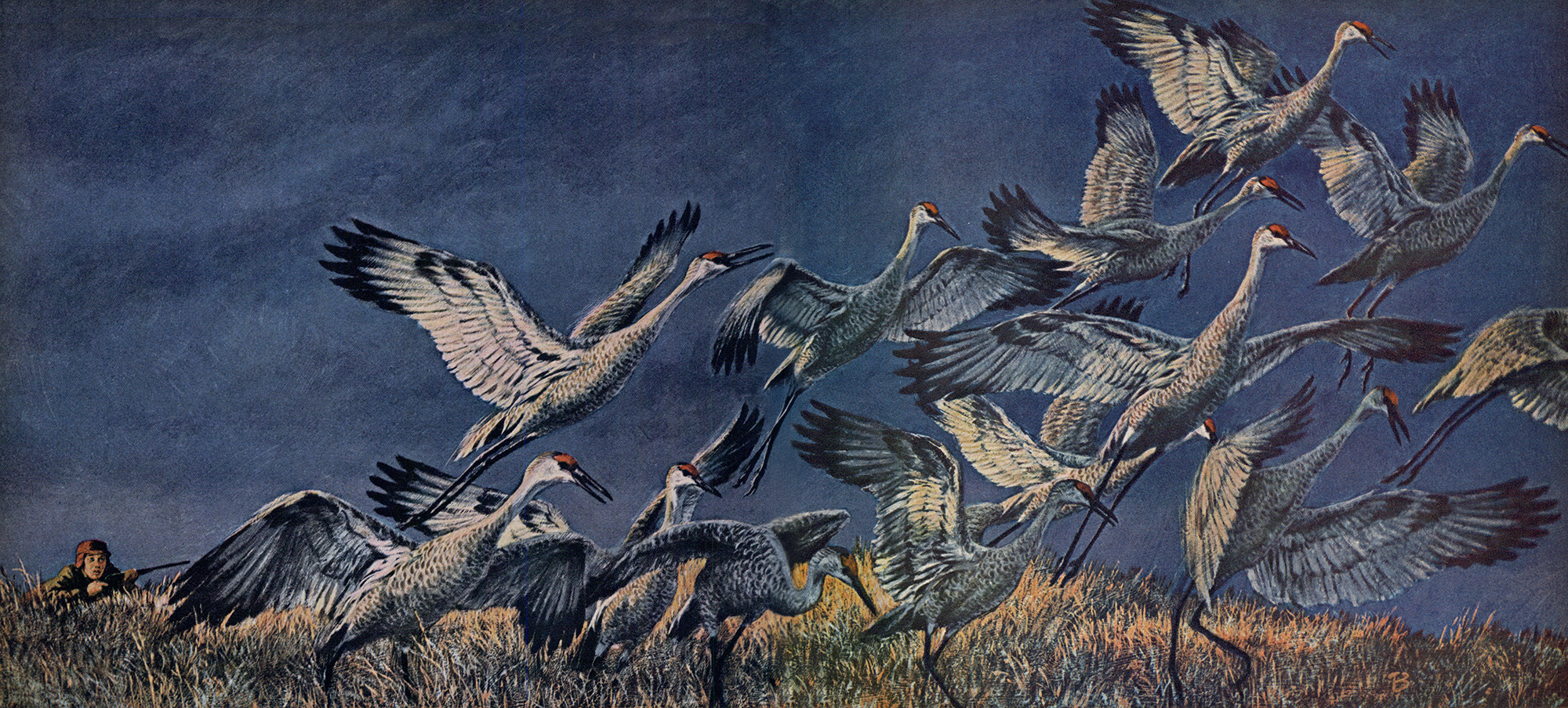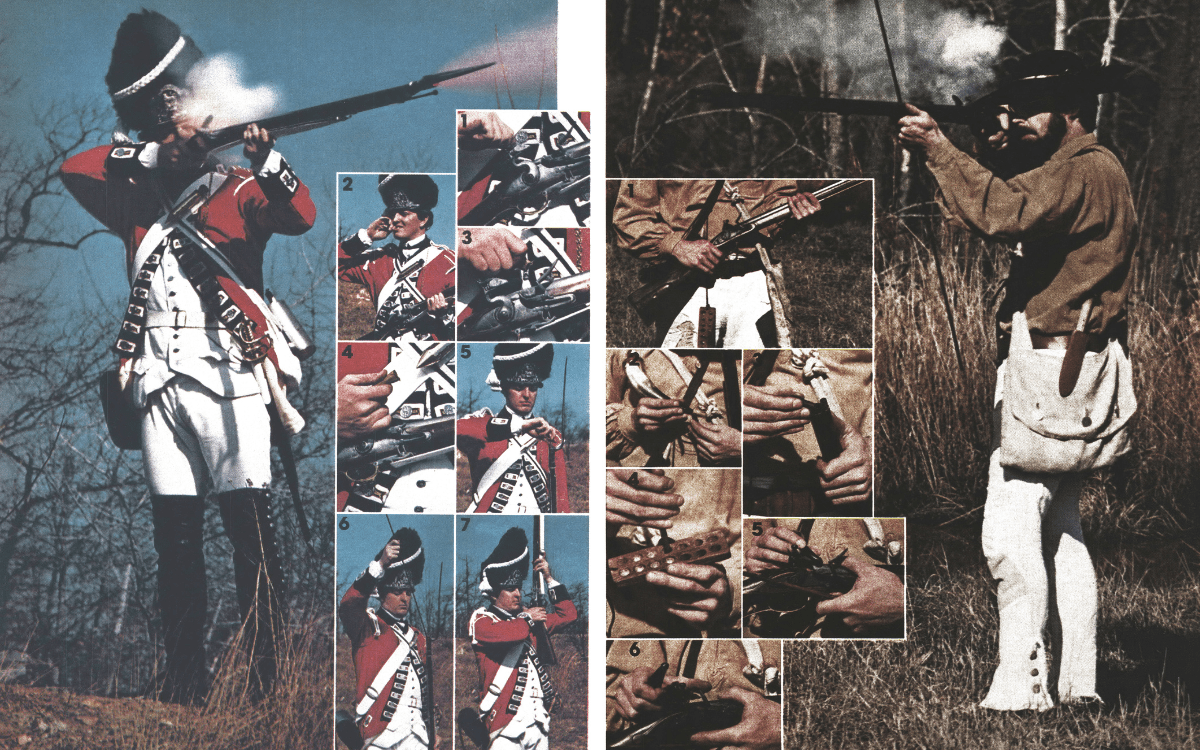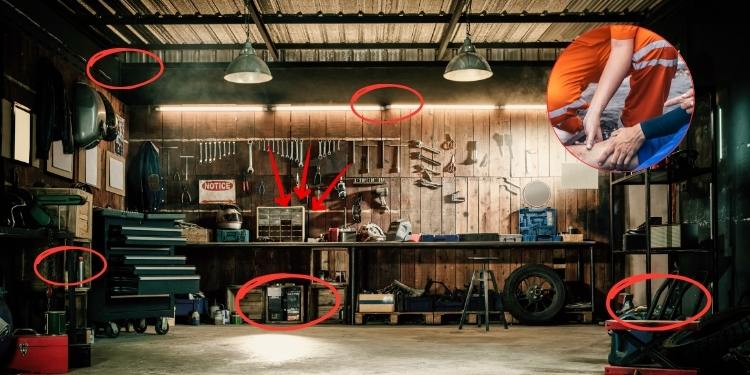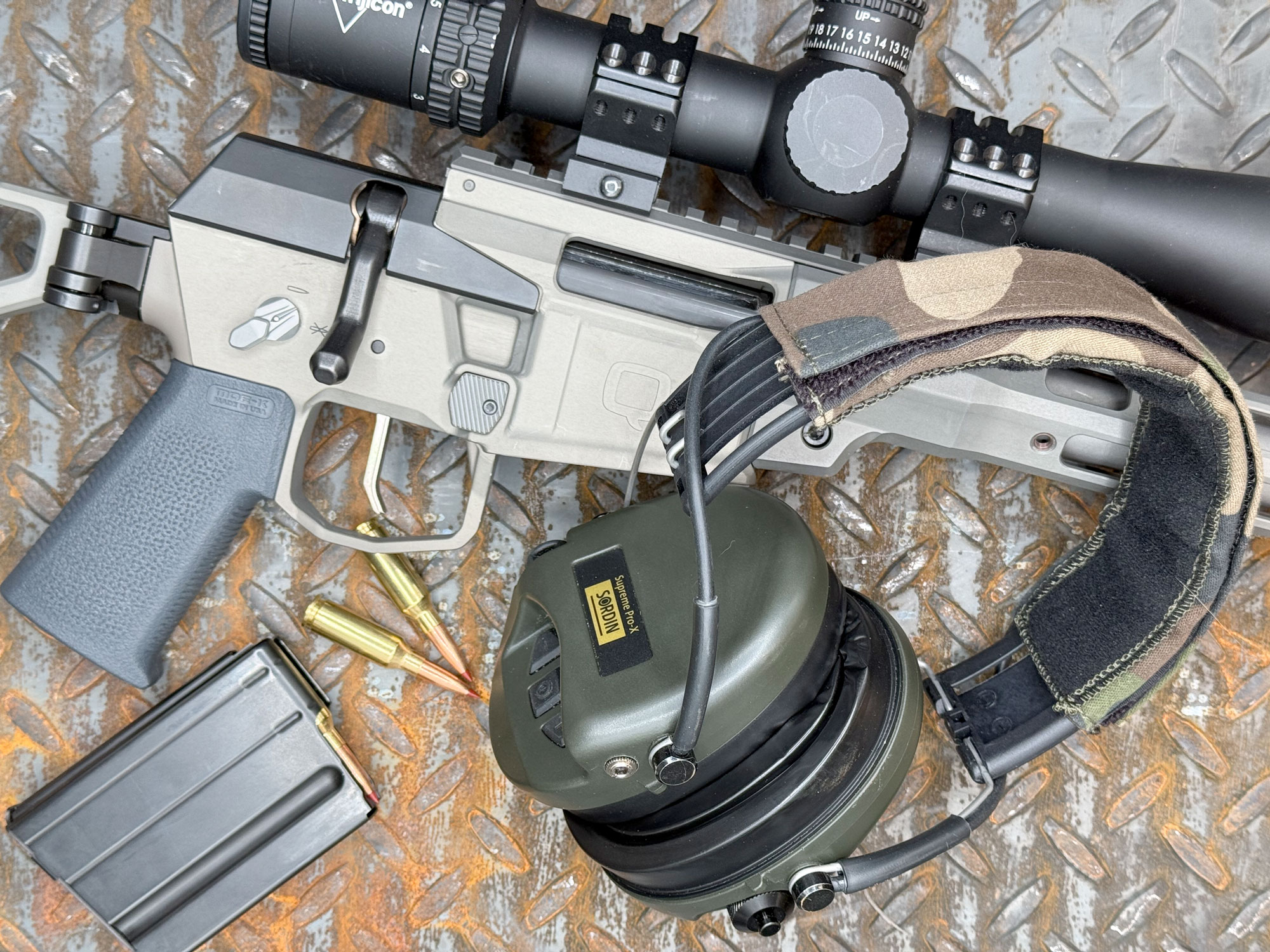I Was the Youngest Duck Poacher in Saskatchewan

This story, “Part 1: Crane Fever — I Hunted to Eat,” appeared in the May 1970 issue of Outdoor Life. It began with the editor’s note below.
Ted Updike, whose picture appears below, is a 69-year-old retired trapper who spent 25 winters in the remote roadless wilderness of northern Saskatchewan. Often traveling and living with the Cree, he came to know moose, caribou, wolves, bears, and sled dogs about as well as any man ever has. Living now in the town of Love, on the edge of the bush north of the Saskatchewan River, he still looks forward to a fall moose hunt each year and tends a few traps in winter.
Updike begins his life story in this installment, telling of his boyhood and early trapline years. In forthcoming issues he will reveal his methods of hunt ing big game and of finding his way through un familiar and unmapped country, and will tell of the many exciting encounters he has had with quarrel some moose and bears.
I suffered my first and last attack of buck fever when I was 12, although I suppose it would be more accurate to call it crane fever.
It was 1913, and we were living on the Saskatchewan prairie, 90 miles north of Regina and not far from the Quill lakes. The prairie was alive with Canada geese and sandhill cranes, and ducks fed in the grain fields in flocks that must have numbered in the millions. The likes of those days will not be seen again.
One fall evening my older brother Ryburn proposed that he and I go out the next morning and try to get some meat for the table.
My gun was an old Stevens Favorite .22 that another brother had given me two years earlier. A lever action single-shot, that rifle was exactly what its name claimed — a favorite with the boys of my day in both the United States and Canada. It was advertised in such magazines as Youth’s Companion and American Boy and was featured in the Sears Roebuck catalogs.
Ryburn had a gun that was in a class by itself, an ancient 12 gauge hammerless double-barrel with the safety and locks so worn that it was apt to go off of its own accord at any time. Ryburn never loaded it until he was close to game and ready to shoot.
That old shotgun never killed any body, but it scared quite a few people half to death before it was finally discarded. Money was scarce and guns were costly in those days, and so the double was kept in use far longer than it should have been.
[Not long after the morning of the crane hunt, Ryburn sold the shotgun to a neighbor, warning him of its peculiarities. A couple of falls after that, Ryburn, the neighbor, and I undertook to crawl up on a flock of ducks that were feeding in a grainfield. We were worming up a low rise, with the neighbor between Ryburn and me and a little to our rear, when there was a thundering whump, dirt flew almost in to our faces, and ducks flailed up in a cloud. The old gun had fired both barrels without anyone having touched the triggers.
[The neighbor passed it along, again with a proper warning, to a Russian immigrant farmer who had been in Canada only a year or so. But the new owner took the gun into the house without remembering to unload it, and hung it on nails on the wall. The family was sitting around talking one evening when the double cut loose with no help from anybody — both barrels again blasting a hole through the wall and causing a small panic. That was the last time it ever held shells.]
Ryburn and I started out on our goose-and-crane hunt before daylight that morning in 1913. It was cold, with frost on the grass, just right for what we had in mind. Before it was light enough to shoot, we separated. He’d hide in the bulrushes at the end of a small lake, and he sent me the other way to scare birds over him.
About the time it started to get real light, I came to a low ridge. I knew enough to sneak over a place of that kind, taking plenty of time and not showing myself until I found out what was on the other side.
What was on the other side this time was a flock of 12 or 15 sandhill cranes, and when I poked my head over the top they were only 50 feet away, within easy range of my .22. But I hadn’t counted on the extremely keen eye sight of cranes.
They saw me the instant I saw them, and they moved about as nimbly as so many wild turkeys. And the surprise of seeing that flock of big stately birds so close at hand was too much for a 12-year-old boy. I lay there in the frosty grass and gawked at them, birds as tall as I was and as heavy as turkeys. Their long necks were up stretched, their crimson crowns shining like jewels in the morning sun.
It was the most exciting thing that had ever happened to me, and I didn’t even remember to raise my rifle.
They didn’t give me much time. They opened their great wings, took a few quick hopping steps, and were airborne and passing swiftly out of range. Only then did I realize that I hadn’t shot.
I’m 69 now. In the nearly 57 years since that fall morning on the prairie, I have never again been rattled by the sight of game. And that was the only time in my life that I ever failed to pull the trigger when I was after meat for the table.
My father had died in 1907 when I was six, leaving Mother with a family of eight-four boys and four girls. We lived then at Oswego, Illinois, just south of Aurora, where I was born.
Shortly before his death Dad had made a trip to Saskatchewan, intending to move the family there and take up a
homestead. By the time Dad died, my oldest brother was old enough to file on a homestead, and as a widow our moth er would also be entitled to a quarter section of land. So we decided to make the move, all but one older sister, who married and stayed in Illinois.
We landed at the town of Lockwood, only to find that although plenty of homestead land was available, the best had been taken and what was left was either alkali or too stony for farming. We lacked the money to move again, and there was no welfare or help for mothers in those days. We settled down in a house with unplastered walls that let the winter winds through in cold gusts. The next few years were hard ones.
An older brother and sister married and left home. It was up to those of us who were left to provide for ourselves and Mother as best we could.
My brother Ryburn, who was with me the morning of the crane hunt, was almost four years older than I. He went to work at 13, driving a team of oxen in the fields, and for the next four years just about all of his wages went to help Mother, my two little sisters, and me.
My oldest brother, Elmer, gave me the used .22 when I was 10. It shot well, and with it ar.d a small reddish brown dog named Sandy, I wandered the prairie all summer, hunting ducks for food. It was illegal part of the time, but ducks were about our only source of meat. And I still take pride in the fact that even as a boy of 10, hunting from necessity as much as for fun, I never killed anything but drakes.
The dog and I would lie in tall grass or behind willows at the edge of a slough and wait until a drake swam close enough for a head shot. I’d kill him, Sandy would bring him in, and we’d lie and wait again. I have never forgotten the peace and contentment I enjoyed in those years, wandering the prairie alone with my dog.
My worst problem was to get money for ammunition. Black-powder .22 shorts cost 20¢ a box. That amount was a small fortune to me. As a last resort I sold a few ducks and raised enough cash for shells. Now and then I even accumulated enough to grad uate temporarily to smokeless powder. If I remember rightly, those cartridges were 25¢ or 30¢ a box.
I still remember my first sale. I had shot seven ducks that day, and a hunter who’d had no luck offered me $2 for them.
I can picture that scene as vividly as if it had happened yesterday. The barefoot kid wearing a battered old hat and bib overalls with patches on both knees, carrying his ducks and his beat up .22, his head not reaching the man’s shoulders. The hunter with a double barreled shotgun cradled in the crook of one arm, the other hand holding out the pair of dollar bills, unheard of wealth for the boy. And off to one side my little curly-haired mongrel, his head cocked, watching the proceedings with the same interest he took in all of my affairs.
The game I shot and the money I made from trapping meant the difference between eating and not eating for the Updikes in those years.
As soon as the sloughs froze hard enough to carry me in the fall, I trapped muskrats in their houses. Good pelts brought 10¢ to 12¢. I also caught a few weasels, and if they were in their white winter coat and large and prime, they were worth 35¢ each.
The game I shot and the money I made from trapping meant the difference between eating and not eating for the Updikes in those years.
I was probably the youngest duck poacher in Saskatchewan. But even then I was following the rule that I have obeyed ever since: I hunted to eat. I have lived in the bush or on the edge of it from that time to now. Hunting was in my blood as far back as I can remember, and I enjoy it today as much as I did when I was a boy. But I have yet to take an animal just because I wanted a trophy.
I have no quarrel with trophy hunters. Mostly they are first-rate sports men, choosing their game with great care and passing up far more animals than they kill. But as for myself, most of the meat I have eaten in the last 50 years has been moose, caribou, elk, or deer, and I get more satisfaction from hunting for our winter’s food supply than I would from collecting a big rack solely for the thrill of taking it.
I quit school in grade eight, the spring I was 13, and started work ing in the village blacksmith shop, turning the forge blower and doing other light work. I switched to a steam threshing outfit that fall, worked on farms until I was 16, and then went to a logging camp north of Prince Albert for the winter. That was where I got the idea of filing on a bush homestead as soon as I was old enough.
When the time came, in 1921, I picked a quarter-section near what is now Love, a grain-elevator town of 140 people a few miles north of the Saskatchewan River and 70 east of Prince Albert. Love wasn’t there then. We had to travel 55 miles south by trail to the railroad and Tisdale, the nearest town. A man by the name of Harvey Snider, who lived six miles from my place, kept a supply of groceries in a room built onto his house, hauling them north the 55 miles. That room served us as a store.
From just north of the Saskatche wan River to the arctic barrens, the country was roadless bush, totally wooded except for a few meadows and willow flats. It has since developed into an excellent farming area. Today both a railroad and a highway cross the re mote homestead that I first filed on back then.
A homesteader, to “prove up” his claim, had to live on it six months of the year for three years and had to do
$500 worth of clearing and improving. With most of us, the clearing was done with an ax and a grub hoe.
The homesteader, to earn enough money to live on while he brought his land under cultivation, had two choices. He could work winters in a logging camp or sawmill, or he could trap. With my leanings, it was only natural that I chose to trap.
In 1922 I went north to a wilderness trapline, with a dog team hauling a toboggan loaded with my supplies. I spent every winter that way for the next 25 years. Some years I had a partner; other times I trapped alone. I like people and company, but I never got lonesome if I spent three or four months in the bush by myself.
When I headed into the bush in the fall of 1922, I had a partner, Ches Rea. Ches had the start of a trapline — one cabin on a small lake and a couple of miles of trail cut-in the country north of the Torch River, along Caribou, Falling Horse, and White Gull creeks. He also had a team of four mongrel dogs, got very big but good workers.
I bought some traps and other equipment, and we cut more trail, found a trapper’s cabin that wasn’t being used, moved in, and were ready for the winter. It turned out that the cabin belonged to Joe Johnson and a partner, but they had a big line and eight cabins and weren’t using this one at the time.
Joe and I became partners a few years later. He is dead now, but I remember him as one of the best woods men and finest men I ever wintered with.
I had learned one lesson on the home stead before Ches and I started trapping. The same rule prevailed there in the bush that had governed me in the earlier years on the prairie: you hunted or you didn’t eat.
My oldest brother Elmer, the same one who had given me my first .22, later bestowed on me a .25/20 Winchester. It wasn’t much of a moose gun, but it brought down my first moose.
I can’t recall a single time I ever ran out of grub entirely and had to go hungry. I may have eaten nothing but moose meat for a week at a time, but that wasn’t too bad. I think the worst I ever fared was when I had nothing but boiled sucker for a few meals, with no salt.
I was out after deer one day in December 1921, hunting for meat that I needed urgently. There was snow on the ground, and while coming back to my homestead cabin empty-handed shortly before dark, I crossed a moose track. It was fresh, and about the first thing I noticed were drops of blood along it. When I looked more closely I saw that the moose was traveling on three legs. With that handicap he shouldn’t be hard to kill.
But dusk was gathering, and it was late in the day to take a track, even a wounded animal’s. I thought it over and decided that the moose could wait until morning. The weather was clear, with no threat of snow, and I’d be surer of getting him in daylight.
Right after breakfast I went back and picked up the track. The moose had been down a couple of times, and after I passed his second stopping place the sign was very fresh. The wind was in my favor, and the timber and alders were so thick that I got within 30 yards before he saw or heard me. He knew he was being trailed, for he was stand ing facing his backtrack.
As he turned to run I put a bullet into the heart region and another near his kidneys. Even with the light wallop of the .25/20 (those slugs weighed only 86 grains), the two shots were enough to do him in. I tracked him a quarter mile and found him dead. Some other hunter had driven a bullet through his front leg above the knee, breaking the bone.
Since then I have killed plenty of moose that furnished more thrills and action, but he was my first. I had sneaked up on him fair and square, and I was proud of him. Even more important, he meant stew in the kettle for the rest of the winter.
My homestead cabin burned in a bush fire the next spring (1922), and I lost the .25/20 along with most of my possessions. The following fall I bought a used .38/55, also a Winchester. It was old but shot well, and it was heavy enough for moose. I made a one-shot kill with it shortly after I got it, but I later traded it for a buckskin co.at and borrowed a .303 Ross for my first trap line winter. That was a rifle the Canadian Army had used in World War I.
The next rifle I bought was a .35 Remington Model 14A. I got it from a Nipawin dentist after a successful deer hunt that he made with Ches and me. It was the best rifle for moose and elk that I ever owned.
All the guns of my grownup years had one thing in common: they were rifles a man could live by in the bush. There was one exception, the .22. Many times, for the sake of lightness, I carried only the .22. With it I could pick off rabbits, grouse, ptarmigan, and even fish and keep myself in meat.There was always wildlife of some kind in the country I trapped.
For big game I have always preferred a large-bore rifle with a heavy bullet. The old .45/90, .405 Winchester, and .40/82 were all good moose killers. So was my Remington .35. I traded it off after three years and have been sorry ever since.
In bush country most game is shot at less than 100 yards. I have killed moose and caribou at distances of only 10 or 15 yards. You don’t need a light, fast bullet for that kind of shooting, and the heavy bullets smash bone and do their job without destroying a lot of meat.
Not that the lighter rifles won’t kill well if you place your shots right. At one time I went back to a brand-new .25/20 because it was light to carry. I drilled two shots into the shoulder of the first moose I used it on. He dropped right there, but when a companion and I looked him over we could find only one bullet hole. Then we dressed him and got the answer. Inside the lungs, which were badly blown up, lay both bullets, a few inches apart. They had gone in at exactly the same spot.
“I see now what you do with that popgun,” my partner remarked. “You shoot once to punch a hole and then put another one in the hole to kill him.”
All the years I trapped, and much of the time spent on my homestead, I lived largely off the land. I can’t recall a single time I ever ran out of grub entirely and had to go hungry. I may have eaten nothing but moose meat for a week at a time, but that wasn’t too bad. I think the worst I ever fared was when I had nothing but boiled sucker for a few meals, with no salt.
Feeding his dogs was often a bigger problem for the bush trapper than feed ing himself. I have used dogs of just about every size and breed, mongrels included. The amount of food they re quire depends, of course, on the weight of the dog.
After years of trial and error I came to the conclusion that for a trapline within 50 miles of a settled area Collies were the best. They are fast, intelligent, and hard working. Back in remote bush, however, I found Huskies better. And for heavy freighting on long trails, a cross between St. Bernard and timber wolf was best. Those cross breeds were not easy to handle and were likely to make trouble if strangers, either human or dog, came along. But they were almost tireless and could endure far more hardship than any other breed.
As a general rule a good team will haul its own weight 16 to 20 miles a day if the going is not too bad. But that means the dogs have to eat well. A 100-pound dog requires five to seven pounds of food a day, more if he is working hard and you are feeding him fish instead of meat.
Whenever I intended to haul supplies into strange country, I made it a rule to go in by myself first and arrange a supply of dog feed by hunting, fishing, or buying it from Natives. That trick saved me the trouble of hauling it in later on.
The hardest trip I can recall was one I made in January of 1928 to Big Sandy Lake, 75 airline miles north of the Saskatchewan River, with my partner Joe Johnson and his wife Vera. The Hanson Lake Road runs past Big Sandy now, but then it was all remote and rough country, accessible only on foot or by dog team. Joe had decided to build a trading post there for trade with the locals, and I agreed to give him a hand. Before we were much more than started, however, Vera got ill, and Joe never carried out the project.
We were driving three teams and traveling as light as we could, with the bare necessities and two bags of traps, but that wasn’t light enough. Joe and I had five dogs apiece; Vera had three. Snow came late that winter, but when it came it was very deep. The going got so bad that we dropped off the traps and I loaded my sled light and went ahead by myself to break trail.
That night I had one of the closest calls of my life. I camped on Mac Dougal Creek and went to bed with a fire still burning in the small stove that heated my tent.
There is always some hazard in a situation of that kind, especially if you are burning dry jackpine, spruce, or tamarack that contains pockets of pitch. As the wood burns down, the fire eats into those pockets and they ignite with a small explosion, sending small red-hot chunks up the stovepipe. If one of those chunks happens to fall on the tent, you’ve got a fire on your hands in a hurry.
That happened to me that night, but luckily I was not yet asleep. I saw the hole burn through the canvas and flames start to lick up, but before the fire could make any headway I beat it out with my hands. After that I punched holes in a sirup pail with a spike and rigged a spark arrester on the stovepipe. The holes tended to clog with soot, but I was able to sleep worry-free.
(I think it was exactly that kind of accident that brought such great hard ship to Olive Fredrickson and her young trapper husband on the Slave River in Northwest Territories in the spring of 1923. She described that tragic tent fire in her story “Nightmare Spring” in OUTDOOR LIFE last July.)
By then we needed meat badly for ourselves and the dogs. I went ahead to the North Mossy River and camped there to hunt moose, but I had no luck. Joe and Vera overtook me, bringing dog food enough for two days, caribou meat that he had got from two trappers they had met on the trail.
We had a fine supper that night, but the dogs went hungry, and we knew we were in a bad spot.
Joe had a camp on Big Sandy, where he intended to build his trading post. It was 11 miles ahead across a wide muskeg. He knew the way, so he went ahead with a light load to break trail.
I put in another day of hunting, but the temperature had dropped to 30 below, and I came back to camp empty handed and with two frozen heels. When I got in, Vera had a caribou stew ready and bannock baking on top of the stove. Joe came back at dark to report that he had found a Cree family camped in a lean-to at his cabin.
We had a fine supper that night, but the dogs went hungry, and we knew we were in a bad spot.
We set rabbit snares, but there weren’t many rabbits in the area, and we caught none.
We drove our three teams on to Joe’s cabin the next day, leaving the tent where it was. But we found the family in the same fix we were in; they had no fresh meat and were living on pemmican. They had come in with a pony, however, and so didn’t need dog food. The father had killed a moose back in the fall. He took Joe and me to the kill, and we brought back the bones for our dogs. They chewed them up to the last scrap. Poor fare but better than nothing, and right then the teams had no more hauling to do.
A couple of days later the man borrowed some of the dogs and one of our toboggans for a trip up the lake. While traveling on the ice a couple of miles from camp, he saw a moose coming. He unharnessed the dogs and turned them loose, and they went after the moose like so many wolves. While they held it at bay the Cree walked in and shot it. We had meat again.
But one streak of bad luck seemed to follow another. Two weeks after that I killed a yearling bull on the North Mossy. We didn’t need the meat right then, so I left him on the ice. When I went back, slush and water had come up and frozen the moose in solid.
I was splitting the carcass down the back with my ax, to take the top half back to camp, when I noticed my dogs standing out on the river, lifting first one foot and then another. Three or four inches of wet slush was creeping down over the ice and had overtaken the team. That kind of flooding was a common winter occurrence on north country streams and lakes as heavy snow pushed the ice down and water was forced up on top of it.
My dogs were wearing canvas boots to keep snow from balling between their toes. A dog gets accustomed to those boots fast and will even put a paw up on your leg to have them put on. But the wet boots were freezing to the dogs’ feet now, and I had to cut them off in a hurry and discard them. The trip back to camp with the moose meat was anything but easy.
Read Next: A Widowed Homesteader Learns to Hunt Moose, or Die Trying
In the end Joe had to take his sick wife out to the settlements, and I followed them. All those weeks of work and hardship were for nothing. But in the life of a bush trapper, that sort of experience wasn’t exactly new.
In OUTDOOR LIFE next month I’ll relate more of the adventures that befell me over the years.
Read the full article here









